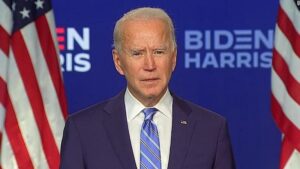When it comes to ad guidelines, NFTs are like IPs and should not be clubbed with crypto, said Rameesh Kailasam, CEO, IndiaTech
The guidelines are a welcome step towards the crypto regulation, however it needs to be tweaked in longer run, believe crypto industry stakeholders
There is no need to put the disclaimer at the beginning as well as at the end of the audio ads, this is discouraging, said some of the stakeholders
First the taxation, and now crypto guidelines, the Indian government has been circumventing crypto regulations while keeping a tab on their transactions and growing influence in check.
Seconding that ‘it’s just the beginning of a major reform’, the crypto industry has, by and large, welcomed the Advertising Standards Council of India’s (ASCI) ad guidelines while seeking a few changes before April 1, 2022, when the ad guidelines will come into effect.
“Indian crypto entities spend hardly a penny in comparison to what the global entities do. For instance, take a look at FTX exchange, Crypto.com, they have signed numerous deals with multiple brands with each worth $200 Mn, $100 Mn and so on. Indian entities are nowhere close to these advertisements and promotional deals,” says Sidharth Sogani, founder and CEO of crypto research firm CREBACO.
“It’s a discouraging guideline, just like the taxation rules,” Sogani added.
Inc42 spoke to the founders, experts and other industry representatives, to further delve into their takes on the latest crypto ad guidelines, beyond the usual PR exercise.
And, there are three key major points that they highlighted demanding further change to make these standards industry-friendly.
NFT Ad Guidelines Must Not Be Clubbed With Crypto Ads
Some of the leading crypto exchange founders while speaking to Inc42 asserted that NFTs in India currently are used for purposes other than financial assets. Keyur Patel, chairman and cofounder of NFT launchpad GuardianLink had earlier stated that NFT is not a financial asset. An NFT is a digital asset associated with games, entertainment, and art. Its inherent value is either in art or utility.
“Also, the buyers of NFT don’t buy it because there are instant gains, they do it because they find affinity to Amitabh Bachchan or Stan Lee or they find games like racing interesting and want to participate in it. Crypto is purely a trade asset, for investments and hence, it needs very aggressive education to ensure that the expectations of returns for the buyers are not skewed by hype and unrealistic aspirations,” said Patel.
Artists who want to promote their NFTs on social media too find it difficult to comply with ASCI. “Imagine I am advertising my NFT on social media platforms for people to buy. And, in order to comply with the ASCI, I will have put a certain disclaimer warning people that NFTs are highly risky and unregulated and that there may be no regulatory recourse for any loss from such transactions,” says an artist codenamed XZV who makes modern art-based NFTs and sales on various platforms.
This takes away the entire charm. And, even if it’s not mandatory for us to follow, nobody like us wants to be on the wrong side, he added.
However, Sogani was of the view that once bought, NFTs too are traded in secondary markets for the sole purpose of making profits hence the Council has rightly clubbed with crypto for advertisement guidelines.
Indian tech industry association IndiaTech.Org has been at forefront of crypto-related policy reforms in the country. It had earlier asked the govt to streamline the crypto advertisement standards just like the way SEBI has done for mutual funds and other products.
On NFT ad-related affairs, CEO Rameesh Kailasam said, “Definitely, there’s a fundamental distinction. The NFTs are more like IPs, unlike cryptos that are perceived as financial assets. This very distinction has to be drawn.”
The Contentious Issues: Killing The Ads
One of the points of the ad guideline says,
“No advertisement may show that VDA (Virtual Digital products) or VDA trading could be a solution to money problems, personality problems or other such drawbacks.”
Similarly, some of the other points assert that advertisements should not show that crypto “products are easy that consumers do not have to think twice about investing”.
To this, a leading crypto exchange founder who did not wish to be named averred that such points will only curtain the creative freedom of those advertisers who wish to comply with ASCI guidelines. Most of the entities will not even bother to comply with these norms as it’s not mandatory.
“What is the meaning of floating an ad, if we can’t even show that why are we showing this?,” he asked.
In such a scenario, a balance should have been maintained drawing a fine line between what is essential and what is optional and further, there is a need to make certain changes in accordance with crypto applications. For instance, we can’t have the same yardstick for DeFi ads, NFTs and crypto trading, he added.
Why Repeat The Disclaimer Twice
It’s cumbersome. First, if you’re running an ad on the radio, the disclaimer needs to be repeated at the beginning and at the end of the audio (> 90s).
Two out of the three crypto founders said this will take a significant amount of the time of their crypto ads and will once again kill the efficacy of the very ad they are trying to promote.
“Disclaimers should be run twice in promotional podcasts that are run for 10 minutes or so,” one of the two founders opined.
The current guidelines are a welcome step, however, this needs an instant fix, to make it more effective, agreed six of the eight industry representatives, Inc42 spoke to, while the two believed that the crypto ad guidelines are perfectly fine and will evolve with time.
“It should be reworked to support all attributes of NFTs,” said Ramkumar Subramaniam, cofounder and CEO of GuardianLink.



![Read more about the article [Funding Alert] Ola raises $500M through Term Loan B](https://blog.digitalsevaa.com/wp-content/uploads/2021/09/Final01-04-1629128250197-300x150.png)






